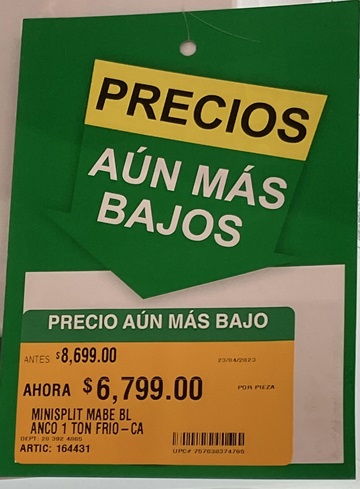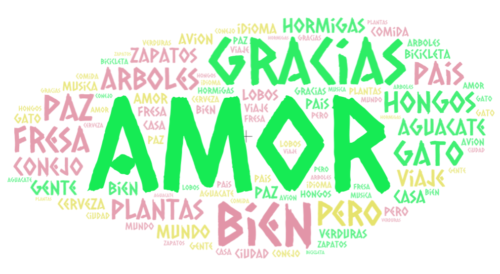Years ago when I was a university student (and later in grad school) I studied Italian and spent two stints living and working in Italy. In the process, I developed proficiency in the language.
Now that I’m over 50 and living full-time in Mexico, my new challenge is learning Spanish.
Though I always felt reasonably comfortable tackling new languages, what I wasn’t prepared for was the difficulty of mastering a language later in life. Let’s just say it’s been a much more humbling experience. The struggle is real.
Researchers at MIT and Harvard found that children absorb new languages much faster than adults up to age 18 or 19. After that, neuroplasticity in the human brain declines, i.e. your mind’s ability to adapt to new experiences isn’t what it once was.
Ok — Why Bother Then?
With our current home base in Guadalajara, speaking Spanish is an absolute necessity. (This isn’t Lake Chapala, where virtually every gringo freely speaks English to locals without a hint of embarrassment — and they speak English right back.)

Here in Mexico’s second-largest city, whether you’re trying to navigate the supermarket, get your gas tank refilled, make a doctor’s appointment, repair your car/bike, or furnish a house, you’re going to have to speak (and read) Spanish to make it happen.
What’s more, by speaking Spanish you’re far less likely to get hit with the “gringo tax” when shopping tianguis (open-air markets).
Beyond that, taking part in social activities and making Mexican friends (i.e. living a full expat life) means attaining some level of proficiency in Spanish.
To borrow a phrase from that famous company in Portland… Just do it!
Getting Started
Your first step is finding quality instruction. I’m a big advocate of private lessons over group lessons, which move more slowly and offer fewer speaking opportunities than one-on-one study.
After a few false starts with an online school (where teachers were frequently late or did all the talking), I was fortunate to connect with a local instructor in Guadalajara named Elena Alvarez Alfaro.
The good news was that I wasn’t starting from zero. Back in 2004 I’d spent a couple of weeks in a Spanish immersion course in Guatemala. Since then, however, I’d had no formal language study.
Elena and I started pretty basic, reviewing the present tense of common verbs, which I mostly still remembered… That wasn’t so bad.
Next, we studied the past tenses, el pretérito and el imperfecto, where correct usage depends on what you’re talking about. One is used for referencing past actions happening one time, while the other is used for descriptions and habitual actions.
It seemed logical enough… But then I started trying to use all of these tenses in conversations. Ugghhh! So.Much.Thinking… Not so easy after all.

New grammar began to come fast and furious in my thrice weekly lessons — gerunds, past participles, and the future tense, followed by subjunctive and conditional tenses. And let’s not forget how to use imperatives(!), but of course I did.
Trying to keep track of all this grammar left my brain a scrambled mess. With Spanish sitting on the surface, Italian the next level down, and finally English the most dug in, my brain was attempting to juggle all three.
I’m pretty sure in those first 3-6 months I was only speaking Spa-talian, i.e. a desperate attempt to improvise whatever word deficit I was dealing with in my Spanish vocabulary.
According to the National Institute on Aging, it’s normal to experience mild forgetfulness as you get older. And I can confirm it’s especially true when trying to build your Spanish vocabulary. There are some words I’ve looked up three or more times before committing them to memory. This didn’t used to happen…
Besides taking lessons, I’ve adopted a few other practices to hopefully accelerate my progress. These can be used by anyone, with or without formal language study.
12 Tips To Improve Your Spanish
-
- Read online newspapers. El Mural and Informador are Mexican publications I check out regularly. Look up the words you don’t already know.
-
- Put yourself in new situations that require you to expand your vocabulary. A few activities that had me learning tons of new words included furniture shopping, grocery shopping, working with real estate agents, and playing tennis.
-
- Join a conversation or study group with others committed to learning Spanish. It’s a great way to practice and shared struggle is more fun than suffering alone.
-
- Avoid spending all your time in insular expat groups where everyone typically speaks English, i.e. If your goal is to learn Spanish, moving to San Miguel de Allende or Lake Chapala isn’t the best idea. (sorry, but it’s true)
-
- Get involved in local activities where most of the people you interact with are native Spanish speakers. It will make your life richer. You will learn a lot more about your host country, and you will gradually pick up Mexican slang, which is hard to get from a textbook. I’ve learned a ton of new words playing in local tennis leagues.
-
- Watch movies in Spanish that you’ve already seen in English so the plot is familiar and you can just focus on the conversations.
-
- Listen to podcasts on topics that interest you.
-
- Watch or listen to local news shows on TV or the radio. Newscasters typically speak clearly and do not use a lot of slang. Here in Guadalajara I enjoy listening to the University of Guadalajara radio station when I’m driving around.
-
- Watch cartoons in Spanish (if you can stand it) since they use simple language and feature plots that are easy to follow. “Bob Esponja” is even sort-of entertaining!
-
- Practice speaking Spanish every day, even if it’s just stuff you’re reading online or your homework. The more you speak, the better your pronunciation. If I’m out in public, I’ll rehearse stuff in my head before I say it.
-
- Use translation apps (but not too much) to expand your vocabulary when you need to know words on the spot. I find myself doing this often when I visit Mexican government offices like SAT or INM since they use such obscure language.
-
- Review basic grammar periodically, since once is never enough.
Staying the Course
It’s been almost a year since I began studying Spanish intensively in Guadalajara. Little by little I’m starting to improve.
I feel more confident and less stressed when speaking Spanish. While not leaps and bounds better, better in baby steps.
They say learning a foreign language later in life is great mental exercise. Those new neural pathways are akin to growing new muscles in your brain, improving memory and logical thinking.
A UCLA study of Alzheimer’s patients published in 2020 even found that learning a second language can delay the onset of dementia.
But besides all that good stuff, mastering a new skill at any age just feels pretty good. Onward! (Adelante!)

